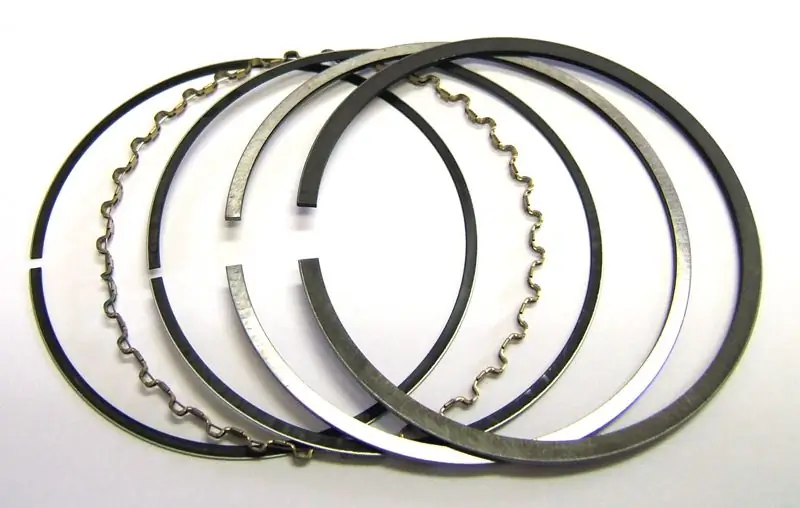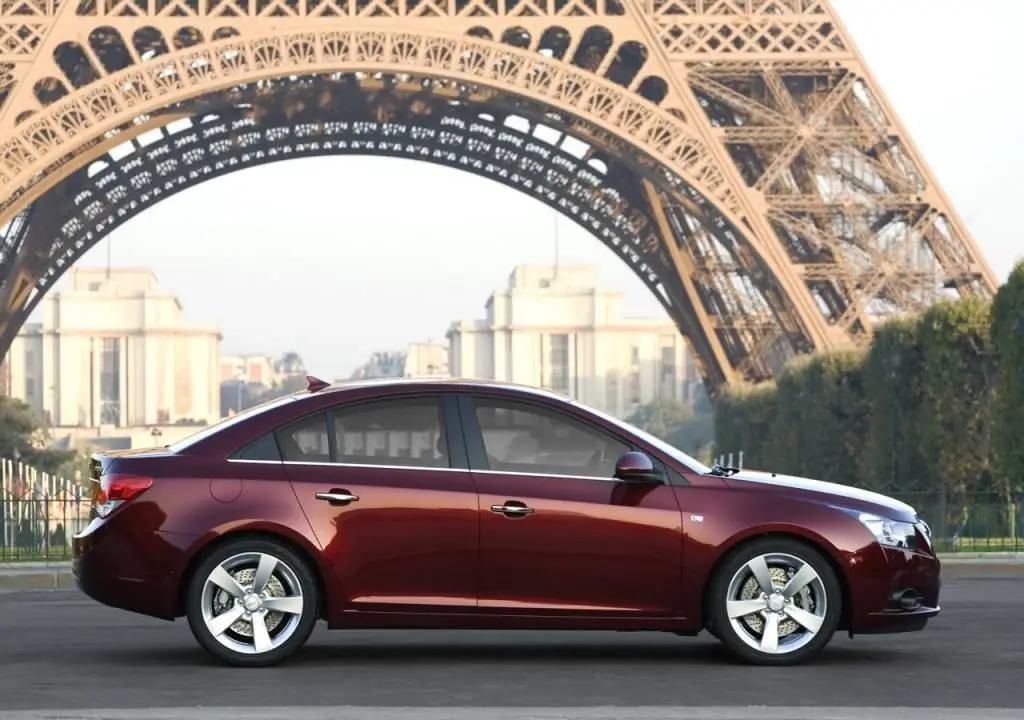2026 Author: Erin Ralphs | [email protected]. Last modified: 2025-01-22 21:14:11
Piston group is a piston and a group of sealing rings. It also includes a piston pin and mounting parts. It is worth considering the purpose of this mechanism.

Due to it, gas pressure is perceived and transmitted through the connecting rod to the crankshaft. Also, thanks to such a mechanism as a piston group, the over-piston cavity of the cylinder is sealed. Thus, it will be protected from excessive entry of lubricating oil and gases into the crankcase. This function is of great importance for the good operation of the engine. The technical condition it is in is judged by its sealing ability. For example, in machine engines, oil consumption is not allowed to be more than three percent of fuel consumption.
The piston group also carries out its work in difficult climatic conditions. That is why the details of this mechanism have a high thermal stress, and this is taken into account when choosing a material and design for them. Their elements are usually developed by manufacturers, taking into account the type of engines and purpose (transport, stationary, diesel, formed, etc.). However, the overall device still remains the same. So it followsconsider what the piston group is made of.

The trunk part (guide) is also called the piston skirt. It has tides from the inside, holes for the piston pin are drilled in them. The lower edge of the skirt is often used as a technological base in the processing of the piston. For this, it is equipped with a boring shoulder. In addition, the skirt walls still perceive lateral pressure forces, and this increases their friction against the cylinder walls and increases the heating of the cylinder and piston.
The piston head carries the piston rings and has a bottom. The bottom groove has drainage holes, through which lubricating oil escapes so that it does not accidentally enter the combustion chamber. Its bottom is one of the chamber walls. It perceives significant gas pressure. The bottom itself can be flat, concave, convex or curly. Again, its shape is chosen taking into account the type of engine as well as the combustion chamber.
It is impossible not to mention such a mechanism as a cylinder-piston group. The main defects of cylinder blocks are cracks, chips and wear. These malfunctions are established after a thorough inspection, pressure testing and measurement of the cylinder. In this process, a head or a cast-iron plate must be installed on the block (a rubber gasket is required). In general, this group is distinguished by heat-resistant steel and oil cooling, which is carried out due to the circulation common lubrication system of the main diesel engine. If you provide good care for the mechanism and high-quality oil, then you can easily increase the life of pistons and cylinders.

And one more mechanism - connecting rod and piston group. The piston is cast and aluminum. The outer surface has a very complex shape. The piston pin is hollow and steel, it rotates freely in the connecting rod bushing and piston bosses. And the piston rings are made of cast iron. And, of course, the connecting rod is forged and steel. Its top head has a steel/bronze mix bushing, which has a positive effect on the performance of the whole group.
Recommended:
How to put rings on a piston: the technological process of installing and replacing rings

If the car's dynamic performance has deteriorated sharply, oil and fuel consumption has increased, problems with starting have appeared, then this indicates engine wear. But this is not yet a verdict. These symptoms indicate that the rings need to be replaced. Let's see how to put the rings on the piston. The procedure is not difficult, but requires the presence of a tool and care
Volkswagen Group

Volkswagen is known all over the world. This is indeed the largest group of companies involved in the production of cars
A piston is a part of a car engine. Device, replacement, piston installation

The piston is one of the elements of the crank mechanism, on which the principle of operation of most internal combustion engines is based. Such parts have three components. Their features are determined primarily by the material and method of production
"Chevrolet Cruz": the pros and cons of the car, specifications, equipment, features and owner reviews

In Russia, Chevrolet Cruze hatchbacks and sedans were produced at the company's plant in St. Petersburg (Shushary). With a station wagon body, cars were produced at the Avtotor plant in Kaliningrad. Reviews about this car are somewhat contradictory, especially in the Russian automotive community. In this article, we will analyze the pros and cons of the Chevrolet Cruze
Carburetor and injector: difference, similarities, advantages and disadvantages of carburetor and injection engines, principle of operation and expert reviews

For more than a hundred years, the car has firmly established itself in our lives. During this time, managed to become a familiar, everyday means of transportation. Let's see what the difference is between a carburetor and an injector, what advantages and disadvantages they have

